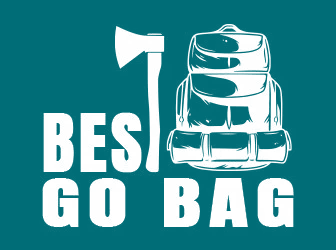Just when we thought meat prices had soared as high as they were going to, disturbing news has just arrived…
In this News4Patriots article, I’ll update you on exactly what’s going on with surging meat prices & why it’s happening. I’ll let you know what I plan on doing about it, and what I suggest for you, too. Here goes…
A recent Fox News report revealed that drought conditions and other factors are resulting in higher numbers of breeding stock being sent to the sale barn early by U.S. cattle producers.
Some of these farmers are even liquidating their stock altogether. Analysts say this will push already-high beef prices even higher soon.
The overall market for cattle has shrunk 2 percent in the past 12 months. There are now between 92 and 98 million cattle head in America. There were approximately 112 million in 1997.
Costs Rising for… Everything
One of the many problems is the high cost of fertilizer. It has increased by about 30%. Some farmers can’t afford to fertilize their fields anymore. Which means cattle get less to eat.
In addition, utility bills have gone up by about 27%. And that includes the cost of pumping groundwater to keep the pasture alive for cattle.
Even the cost of corn and soybeans has risen sharply. Those are two staples for cattle. And the high temperatures, which lead to drought, are killing some of the animals. Earlier this summer, approximately 2,000 cattle in Kansas died from heat stress.
One farmer said the only thing that might bring down beef prices over the next couple of years is a recession.
It’s About Supply & Demand
How does all this translate to higher prices? It’s about supply and demand. The price of ground beef was already 9.7% higher this summer than it was a year ago.
The anticipated decrease in supply means prices will go up. The U.S. Department of Agriculture had predicted that average steer prices would go up nearly 8.5% next year. But that estimate will need to be adjusted.
Western grazing lands have been hard hit by drought, making it challenging for farmers to keep cattle well fed and watered.
Colin Woodall is CEO of the National Cattleman’s Beef Association. He said this year’s drought – over much of the country – is more widespread than regional droughts of past years.
Uncontrollable Increases
Woodall told Fox Business, “There’s no place to go because everybody is struggling to find the forage they need to feed their cattle.” With fewer cows giving births to calves, prices will rise.
“We do expect the prices to continue upwards, but everybody has to remember that it’s not cattle producers setting that price.
“It’s all about costs. When you look at those who make a decision to send their cattle to market to either thin down their herd or completely eliminate their herd, it is always going to be attributed to the increase of their input costs.
“And that is everything from the cost of feed, cost of hay and cost of diesel for tractors, diesel for the truck, fertilizer costs. And there’s so many things that go into producing cattle that the producers just don’t have any control over.”
Hay! That’s Not Fair!
One of the many problems cattle-producing farmers are experiencing is the increased cost of hay.
They’re now getting less hay for a higher price than they used to pay for more hay. That’s mainly due to drought causing grasslands to dry up. And the hay that is available costs more to transport than previously.
John Kleiboeker is a breeding cattle operation owner in California, Missouri. He’s had to switch hay manufacturers recently.
“There is hay available,” he told Fox Business, “But with freight, the cost of transportation to bring it 200 to 250 miles south may be prohibitive. It gets really expensive real fast.”
Sticker Shock at Grocery Stores & Steakhouses
We’re likely to see beef price increases in our local grocery stores very soon. Possibly as early as September.
Steakhouses will also be forced to raise the prices of their meals. This will be true especially for what is called prime meat.
Victor Colello is director of meat for the Morton Williams grocery chain in New York City. He recently told the New York Post, “We don’t know where prices could end up, but it’s possible that they go back up to 2020 levels.”
But even now – before the meat price surge is expected to kick in – meat prices are well above pre-pandemic levels.
Add Inflation to the Mix
Charlie Palmer is a veteran restauranteur who operates 16 restaurants including five steakhouses.
He predicts prime cut price increases of 5 to 10% through the end of this calendar year. He said customers can expect more affordable “secondary cuts” on menus. Such as top sirloin and flatiron steaks.
One steakhouse in the Big Apple is already charging $25 for its burgers and steak sandwiches. Now they’re considering raising that price to $28 or $29.
Of course, inflation is also a factor. It has affected the price of just about everything. But meat prices have gone through the roof for a number of reasons.
It might be time to find some protein alternatives to meat. Not to eliminate meat from your diet, but to augment it with more affordable protein sources. I don’t know about you, but I don’t want to have to take out a loan to buy a pound of beef.


